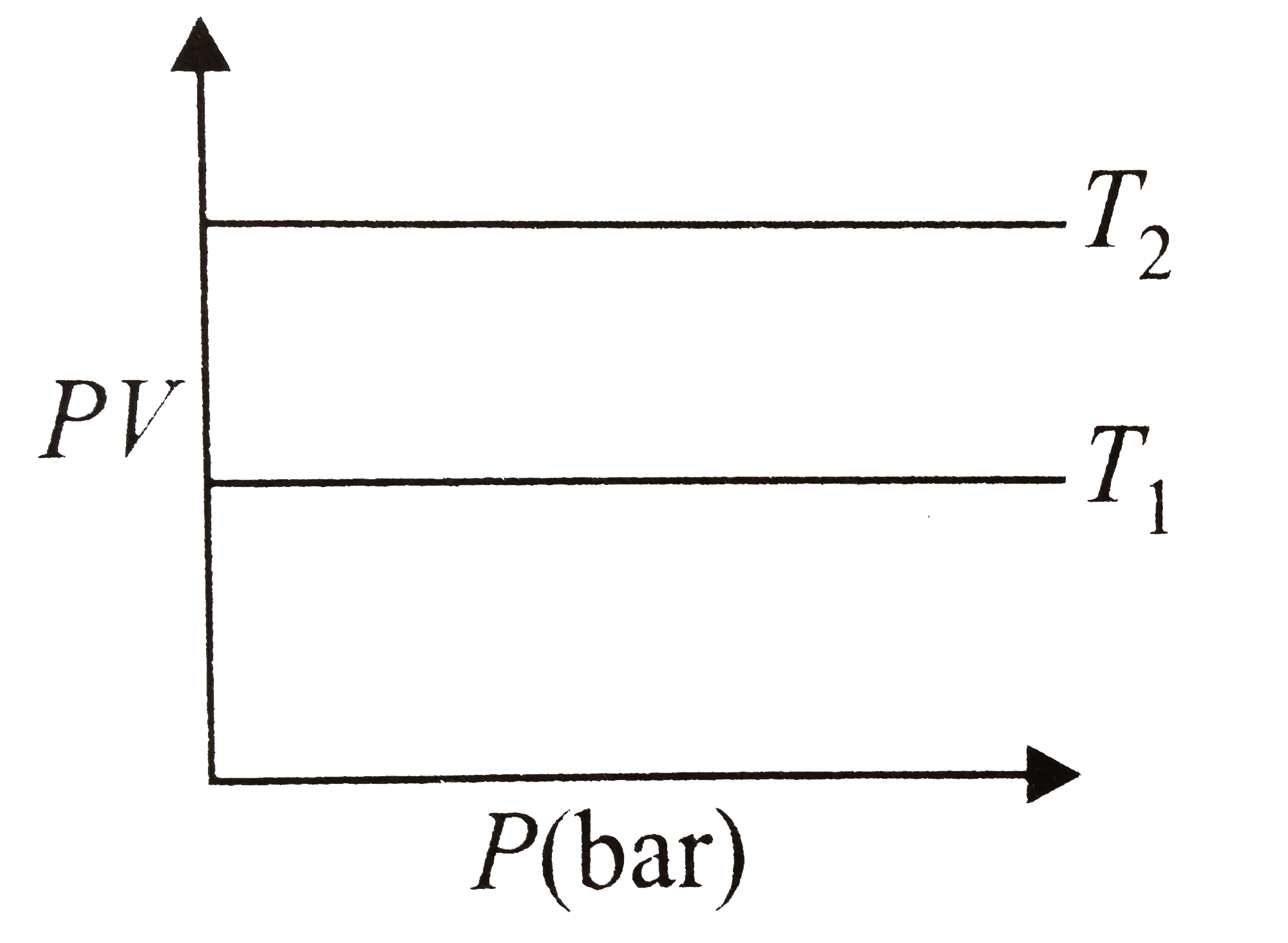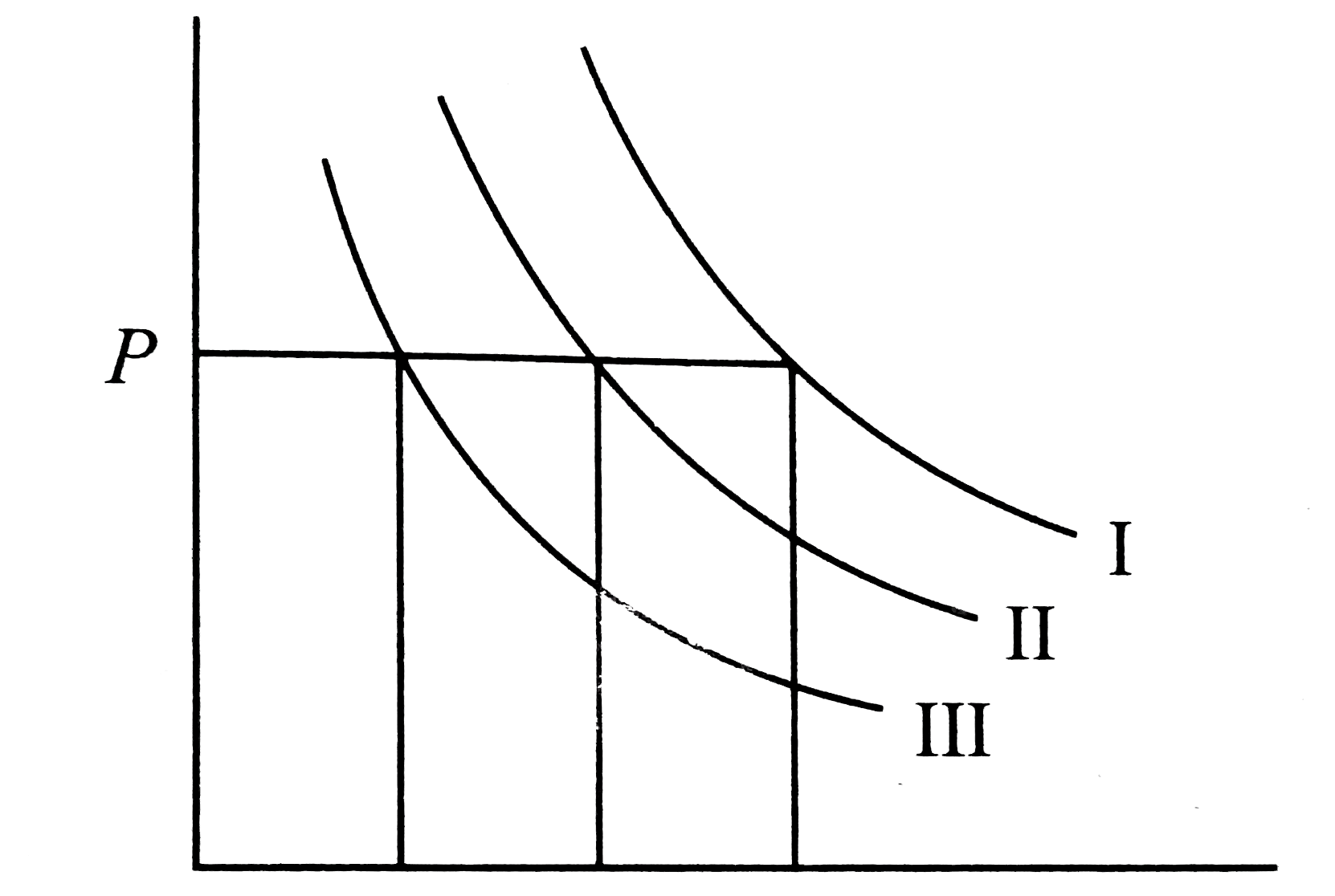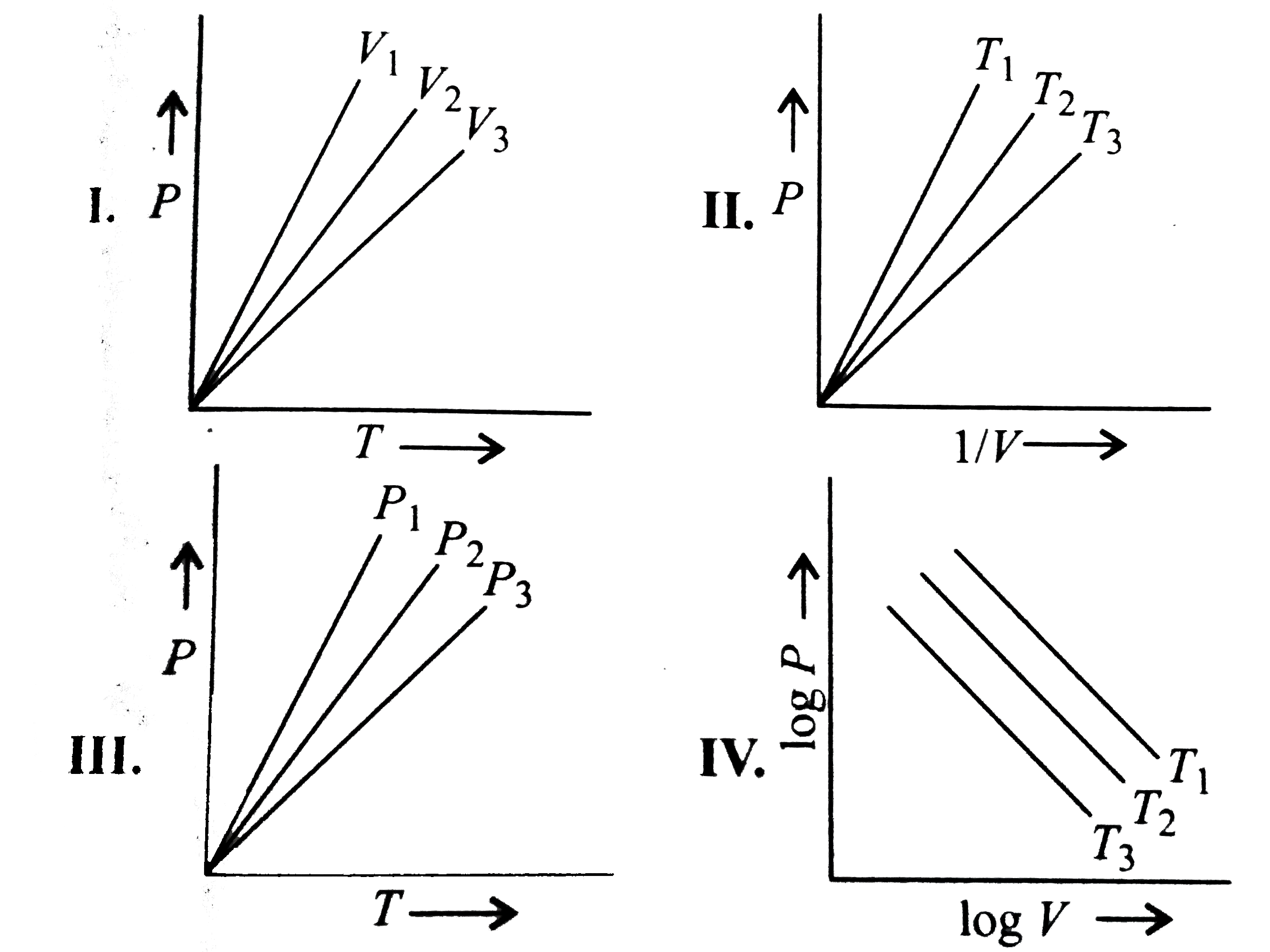Complete Solutions to Gas Law (Boyle'S Law, Gay - Lussac'S Law, Avogadro'S Law) of chapter STATES OF MATTER of Class 11 book with complete answers and questions
| Class 11 | CHEMISTRY |
| Chapter | STATES OF MATTER |
| A2Z | Gas Law (Boyle'S Law, Gay - Lussac'S Law, Avogadro'S Law) |
| Number Of Questions | 31 |
| Academic Year | 2023-24 |
Which of the following is true about gaseous state?
View SolutionA cylinder containing cooking gas can withstand a pressure of `15 atm`. The pressure gauge of the cylinder indicates `12 atm` at `27^(@)C`. Due to a sudden fire in the building, the temperature starts rising. At what temperature will the cylinder explode?
View SolutionThe product of `PV` is potted aginst `P` at two temperatures `T_(1)` and `T_(2)` and the 'result is shown in the figure. What is correct about `T_(1)` and `T_(2)`?

View SolutionWhich of the following statements is wrong for gases?
View SolutionIf `P,V, and T` represent pressure, volume and temperature of the gas, the correct representation of Boyle's law is
View SolutionIf `V_(0)` is the Volume of a given mass of gas at `273K` at constant pressure, then according to Charles's law, the volume at `10^(@)C` will be:
View SolutionWhich of the following curves does not represent Boyle's law?
View SolutionPressure remaining the same, the volume of a given mass of an ideal gas increases for every degree centigrade rise in temperature by define fraction of its volume at
View Solution`O_(2)` gas at `STP` contained in a flask was replaced by `SO_(2)` under same conditions. The weight of `SO_(2)` will be
View SolutionFor the given ideal gas equation `PV=nRT`, answer the following questions:
At constant temperature, in a given mass of an ideal gas
View SolutionAccording to Charles's law
View SolutionA gas at a pressure of `5.0` atm is heated from `0^(@)C` to `546^(@)C` and simultaneously compressed to one-third of its original volume. Hence final pressure is
View Solution`I`, `II`, and `III` are three istherms, respectively, at `T_(1)`, `T_(2)`, and `T_(3)`. Temperature will be in order

View SolutionA certain sample of gas has a volume of `0.2` litre measured at `1 atm` pressure and `0^(@)C`. At the same pressure but at `273^(@)C`, its volume will be
View SolutionAn open vessel containing air is heated form `300 K` to `400 K`. The fraction of air originally present which goes out of it is at `400 K`
View SolutionAir at sea level is dense. This is a practical application of
View Solution`400 cm^(3)` of oxygen at `27^(@)C` were cooled to `-3^(@)C` without change in pressure. The contraction in volume will be as per Boyle's law?
View SolutionWhich of the following represent `logP vs. log V` variation as per Boyle's law?
View SolutionIf `20 cm^(3)` gas at `1 atm` is expanded to `50 cm^(3)` at constant `T`, then what is the final pressure
View SolutionIf the pressure of a gas contined in closed vessel in increased by `0.4%` when heated by `1 K`, its initial temperature must be:
View Solution`300 ml` of a gas at `27^(@)C` is cooled to `-3^(@)C` at constant pressure, the final volume is
View SolutionA sample of gas at `35^(@)C` and `1 atm` pressure occupies a volume of `3.75` litres. At what temperature should the gas be keep if it si required should the gas be keep if it is required to reduce the volume to `3` litres a the same pressure:
View SolutionWhich of the following statement is false?
View SolutionTwo closed vessels of equal volume containing air at pressure `P_(1)` and temperature `T_(1)` are connected to each other through a narrow tube. If the temperature in one of the vessels is now maintained at `T_(1)` and that in the other at `T_(2)`, what will be the pressure in the vessels?
View SolutionAs per Boyle's law which of the following is/are kept constant?
View SolutionWhich of the folloiwng graph is/are correct as per charles law?
View SolutionVolume of the air that will be expelled from a vessel of `300 cm^(3)` when it is heated from `27^(@)C` to `37^(@) C` at the same pressure will be
View SolutionAs per Charles law which of the following is/are correct
View SolutionTo determine the value of `R`, which of the `PV` value is considered to be equal for every gas at `273 K`?
View SolutionFor `1 mol` of an ideal gas, `V_(1)gtV_(2)gtV_(3)` in fig. (`I`),`T_(1)gtT_(2)gtT_(3)` in fig. (`II`), `P_(1)gtP_(2)gtP_(3)` in fig. (`III`), and `T_(1)gtT_(2)gtT_(3)` in fig. (`IV`) , then which curves are correct.

View SolutionAt definite temperature the volume of a definite mass of gas is `10L` at `5 atm` pressure, at the same temperature if the pressure of the gas is decreased to `1 atm`, the volume of same gas becomes
View Solution
Gas Law (Boyle'S Law, Gay - Lussac'S Law, Avogadro'S Law) questions and complete solutions for chapter STATES OF MATTER of A2Z CHEMISTRY (HINGLISH) of Class 11
All Exercises from A2Z Class 11 CHEMISTRY STATES OF MATTER
- AIIMS Questions
- AIPMT/ NEET Questions
- Assertion - Reasoning Questions
- Dalton'S Law Of Partial Pressure, Graham'S Law Of Diffusion/ Effusion
- Gas Law (Boyle'S Law, Gay - Lussac'S Law, Avogadro'S Law)
- Ideal Gas Equation
- Kinectic Theory Of Gases, Maxwell Distribution Of Speed
- Liquid State
- Section B - Assertion Reasoning
- Section D - Chapter End Test
- Van Der Waals Gas Equation And Liquefaction Of Gases